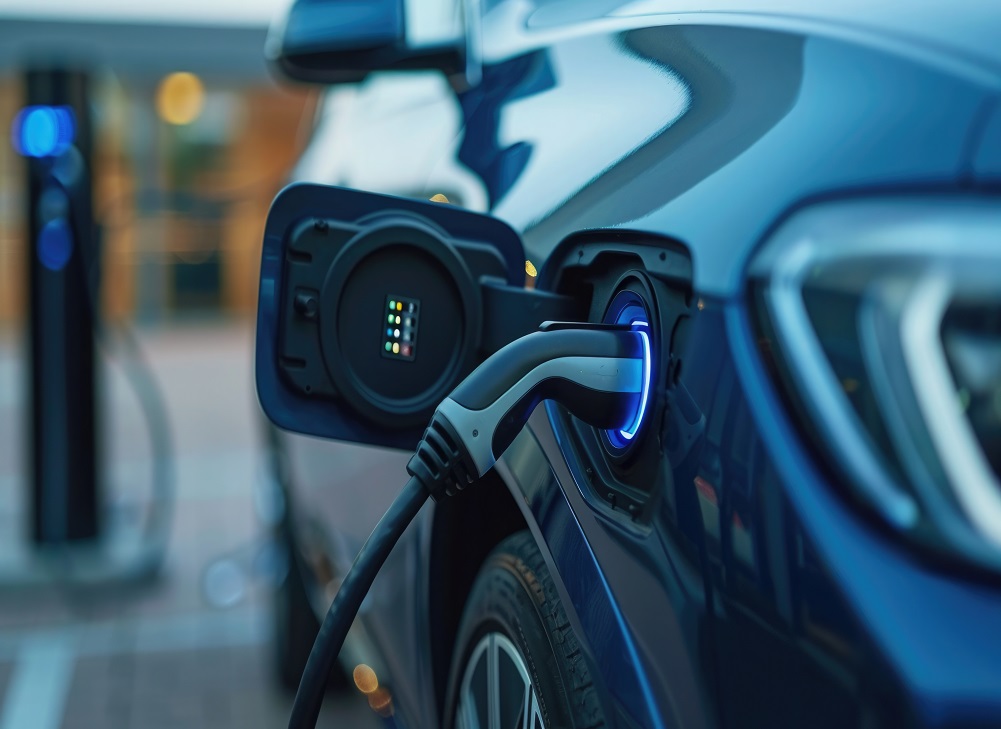Are electrical vehicles a greater fire risk than traditional vehicles?
Written by Aimee Lowrey-Joyce | 10/09/2024
Contrary to popular belief, internal combustion engine (ICE) vehicles are about 20 times more likely to catch fire than EVs, according to 2022 research by the Swedish Civil Contingencies Agency. However, EV fires are more dangerous due to higher temperatures, thermal runaway, and explosions. Fires in underground locations, like car parks, can be especially hazardous.
Mitigating electrical vehicle fire risks in commercial buildings
There are several ways to reduce the risk of EV fires in buildings:
- EV charging infrastructure: Position chargers away from combustible materials, use ventilation, and group chargers in one location. Install chargers on non-combustible surfaces and ensure installers are certified.
- Fire suppression: For indoor or underground chargers, install sprinklers and fire detection systems, and ensure chargers can be shut off automatically during a fire. Create fire-resistant compartments around charging areas.
- Maintenance: Regularly maintain and inspect EV chargers and have processes in place for repairs.
Additional considerations for e-bikes and e-scooters
These vehicles have lower voltage but may use substandard batteries, increasing fire risk. Avoid charging them in hallways or fire escapes, and do not use multi-plug adapters. Managing agents should monitor for safety hazards and ensure repairs are addressed promptly.
Though EV infrastructure presents new risks, regular risk assessments and proactive measures can minimize hazards, lower insurance premiums, and ensure swift claim approval.
Latest News from Vista...
 (1).png)
Rising Costs? Your Insurance Bill Doesn’t Have to Be One
In a climate where energy prices, supplier costs, and wage bills are all climbing, it’s no surprise that SMEs are feeling the squeeze.

Top Tips for Making Business Insurance Savings in 2025
How SME business owners can protect their business without breaking the bank

Vista North West sponsors Wigan Athletic goalkeeper
Vista North West sponsors Wigan Athletic goalkeeper, Tom Watson

Is AI in Insurance Due Diligence worth the hype?
Is AI used for insurance due diligence really worth the hype or is handling risk something humans just do better?

How to safely dispose of lithium batteries
From smartphones to cameras, lithium batteries power much of our daily life—but what happens when they reach the end of theirs?

Vista NW Claims Support in Action
How Vista North West's quick thinking and spring to action helped prevent major losses for this wholesale/retailer

Are electrical vehicles a greater fire risk than traditional vehicles?
Contrary to popular belief, internal combustion engine (ICE) vehicles are about 20 times more likely to catch fire than EVs

Can burnout be a cyber security risk?
Employee wellbeing has become a key focus for improving productivity, profitability, and talent retention, but its impact on cybersecurity is less recognised.

What’s behind 112 Million Sick Days Taken by Workers Annually?
Last year, 112.5 million sick days were taken by people with long-term health conditions, yet only a third received employer support to return to work.

Important Changes Coming to the Motor Insurance Database
The Motor Insurers’ Bureau (MIB) is transitioning its industry services to a new cloud-based platform named Navigate.

Ten reasons why your business needs cyber insurance
ten reasons why your business needs cyber insurance and how Vista North West can help provide it

The Building Safety Act - deadline 30th September
There are only a few weeks before the 30th of September cut off, for those responsible for the health and safety of high-rise residential buildings, to register and comply with the new Building Safety Act.

Vista North West and Consumer Duty
On 31 July 2023, new Consumer Duty rules came into play in the UK, but what is it exactly and what does it mean for our customers at Vista North West?

Cyber & Data – Working From Home
For many of us, our way of working has changed drastically over the last 2 years, there’s no better time to talk about the importance of data protection protocols and the steps you can take to improve your processes while working from home.

Vista NW celebrates a successful first year of trading
Dan Stockley reflects on a fantastic first year in business

Vista NW appointed as Insurance Broker to Nationwide vehicle delivery business
Vista NW appointed as Insurance Broker to Nationwide vehicle delivery business.

Why are the cost of insurance claims rising?
Our guide to the rising cost of insurance claims and what you can do

Building Underinsurance
Are you completely comfortable that your buildings are suitably insured and not at risk of underinsurance?

